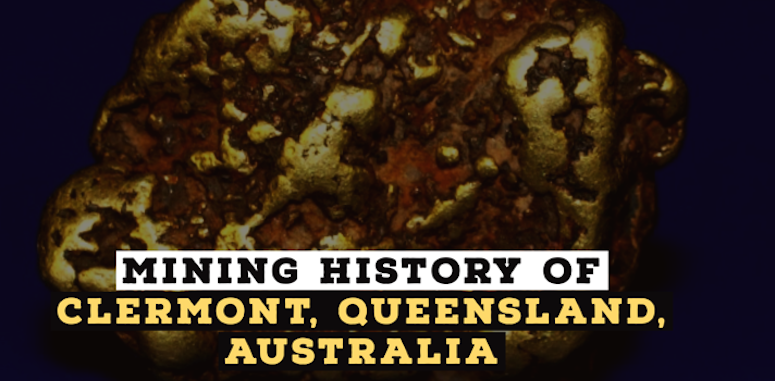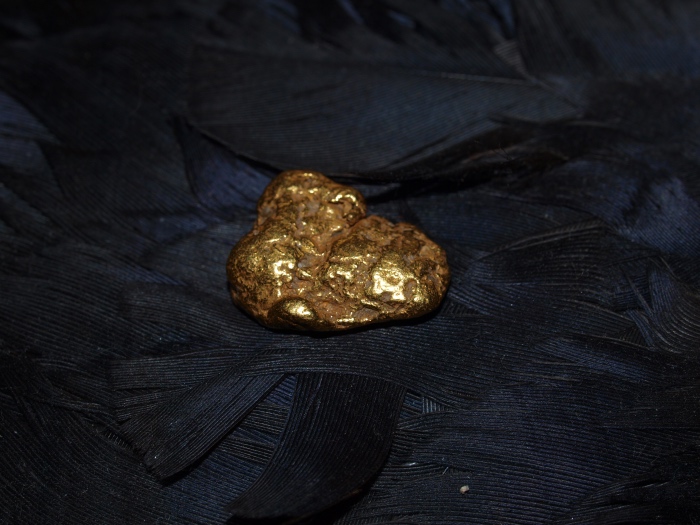
Clermont is a small mining town located in the Isaac Region, Queensland Australia. Although the town is commonly known as a major hub for large coal mines, it has a rich mining history that dates back decades. Clermont also has a wide array of mineral deposits including gold and other metals. Gold mining will however be the focus of our article today. But we start off with a brief background of the town.
Background of Clermont Australia
As noted above, the town of Clermont is located in the Isaac region of Queensland. According to the 2016 census, the town had a population of just over 3,000 people. Although over the years Clermont has evolved to become one of the most important coal mining hubs in Australia, it was established for the first time as a gold mining town back in 1861.
If the name of this small Australian town sounds familiar, its probably because its named after Clermont-Ferrand, a popular city and commune located in France. Originally, the town was established on low lying ground next to a large lagoon.
As a result, it experienced severe flooding, something that often affected the local mining industry. It is believed that between 1864 and 1896, four substantial floods caused massive devastation on the entire town. But in recent memory, there hasn’t been any serious cases of massive flooding reported.
History of Gold Mining in Clermont
The town of Clermont was a popular destination for European explorers even before the beginning of the gold rush. The first European to pass through the town was Ludwig Leichhardt, a German explorer and scientist interested in studying rocks and wildlife. However, despite this interest from Europe, the town really peaked and started growing when gold was discovered there in 1861. It was one of the largest gold rushes in Queensland’s history.
Immediately after gold deposits were discovered in the region, settlements started to form as miners moved in to take advantage of the new found wealth. The growth was too fast and a year later, Clermont was proclaimed as a town. But the mining activities did not end with gold.
In 1863, large copper deposits were discovered about 5 kilometers south of the town. The mining rights were claimed by the Peak Downs Copper Company and mining operations started immediately. The rapid expansion of copper mining led to the development of a new settlement mostly around the copper mine. Over a period of 15 years, the settlement produced over 17,000 tons of refined copper before deposits started to decline.

There are several areas around Clermont where a miner can still successfully find gold. Metal detecting is popular here, and it’s a good way to find nice nuggets.
Mining Challenges in the Town
Between the 1860s and the 1880s, both the Copperfield town and Clermont grew extensively. But conditions in the mining industry posed several challenges. First, the price of gold and copper in London fell massively during this period. London Was the main export market for the resources mined here. As a result, mining activities in both towns had to scale down.
Additionally, since the town of Clermont was established in a low-lying area, it was prone to flooding. Although the town had managed to fend off several flooding incidents, in 1916 it experienced severe and tragic floods. Soon after, a decision was made to relocate it towards higher ground. This led to massive disruption of the budding mining sector, something that would ultimately affect production.
Gold Prospecting in Australia’s Northern Territory
5 Huge Gold Nuggets Found with Metal Detectors
The State of Mining Today
Despite the early setbacks, Clermont continued to flourish as a mining town. In addition to gold and copper, silver and coal have also been discovered there. Today, the mining industry remains one of the most important sectors in the local economy, employing nearly 40% of the entire population.
Clermont is also one of the major producers of gold in Australia. For example, it is estimated that between 1878 and 1956, this small town produced and exported over 400,000 ounces of gold. Additionally, in the early 1980s, new deposits of gold were discovered in the town, cementing Clermont’s future as one of the most important gold mining centers in the country.
General prospecting (fossicking) by small-scale miners is still a popular activity in the Clermont area, and there are several areas set aside that are open to search for gold. One is the Flat Diggings Reserve Fossicking General Permission Area. It was opened up in 2019 and has been a draw for metal detectorists who want to search for gold nuggets.
Another option is the Bathampton General Permission Area. This is another one of the 16 total fossicking areas scattered throughout Queensland. It lies right in the heart of historically rich gold country.
Coal is King Now
Even with its rich history of mining gold and copper, the coal sector is still a major industry in the town. The Clermont coal mine, located 12 kilometers west of the town center, is one of the largest in Australia. The mine started operations in 2010 and has yet to hit full capacity. Once it does, it could easily produce 12.2 million tons of thermal coal for export to international markets.
The town is also home to another large coal mine called Blair Athol. It is located 20 kilometer north of the town center. This one is a bit older though but it still produces a lot of coal. Current estimates show that 12 million tons are shipped from here each year. Most of the coal is sold in Asia and Europe.
The Early Mining History of Australia’s Most Famous Goldfields
